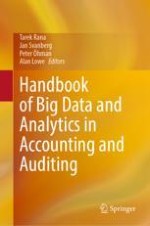2023 | OriginalPaper | Chapter
23. How Blockchain Is Transforming Accounting, Auditing and Finance: A Systematic Review
Authors : Manpreet Singh, Mahesh Joshi, Sharad Sharma, Tarek Rana
Published in: Handbook of Big Data and Analytics in Accounting and Auditing
Publisher: Springer Nature Singapore
Activate our intelligent search to find suitable subject content or patents.
Select sections of text to find matching patents with Artificial Intelligence. powered by
Select sections of text to find additional relevant content using AI-assisted search. powered by
